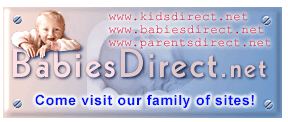 Many expectant mothers are aware of the wonderful opportunity they have to enhance the physical and emotional bond with their babies by breastfeeding as soon as possible after childbirth. It is also recommended that a baby be breastfed for the first year of life. Despite this, a return to the workplace or an otherwise busy life may bring about challenges that make it difficult to continue breastfeeding. Those mothers who cannot or choose not to nurse may also experience these challenges soon after childbirth.1
Many expectant mothers are aware of the wonderful opportunity they have to enhance the physical and emotional bond with their babies by breastfeeding as soon as possible after childbirth. It is also recommended that a baby be breastfed for the first year of life. Despite this, a return to the workplace or an otherwise busy life may bring about challenges that make it difficult to continue breastfeeding. Those mothers who cannot or choose not to nurse may also experience these challenges soon after childbirth.1
Whether or not a new mother initiates breastfeeding, her body will begin producing breast milk soon after her baby is born. Breast Milk Leakage (BML) is a challenge that most new mothers encounter, resulting in inconvenience, embarrassment and discomfort. BML is the uncontrollable release of breast milk from the nipple in response to a reflex in lactating women known as “letdown”, or Milk Ejection Reflex (MER). Healthcare providers often tell breastfeeding mothers to expect BML for 2-3 weeks postpartum. To the contrary, studies indicate that over 90% of nursing mothers struggle with BML at 2 months postpartum, and 66% of nursing women continue to experience BML at 6 months postpartum.2
Breastfeeding mothers often use nursing pads to absorb leakage. Without frequent changes, these pads can leak through resulting in wet clothing, discomfort and a higher susceptibility to sore nipples and breast infections.3 Other solutions that are recommended to temporarily control BML include the use of patterned clothing to hide leakage and breast shells to collect milk. More often that not, these methods are ineffective in controlling BML and can even contribute to further complications. Unfortunately, the lack of a safe and effective solution to BML has caused many new mothers to wean prematurely.4
Non-breastfeeding and weaning mothers also experience BML. In the past these mothers were given lactation suppressing medications that are no longer available. Binding with elastic bandages is the method often used in the absence of these medications, to assist in the process of “drying up”. However, most women consider it extremely uncomfortable, inconvenient, and often harmful.5
As a result, new mothers are now turning to a recently introduced breakthrough product called blis (the Breast Leakage Inhibitor System). blis is a patented and FDA certified product. It is a soft, flexible disc that safely and effectively controls BML by using the natural method of gentle, even pressure on the nipple, which stops leakage and prevents wetness on the skin and clothing. One mother from Cincinnati, Ohio says, “I must rank (blis) up there with Tampons and premenstrual medicines! Since starting back to work, if it wasn’t for the blis product, my son and I would not be continuing to reap the benefits of our breastfeeding relationship.” blis is also a safe and effective alternative to binding, and can be worn day and night to control BML and provide comfort during periods of engorgement, while a mother’s milk supply decreases naturally.6
New motherhood and the pressures of modern life bring about many challenges for today’s women. Fortunately, blis provides a proactive solution to one of these challenges by safely and effectively controlling BML and eliminating leakage worries, allowing new mothers the confidence to pursue an active postpartum lifestyle. To find out more about BML and blis call 888-410-2547 or visit
Editor’s note: The information above was contributed by Erika Davis, ProLac Inc.
References
[1] Ryan A.S.: The Resurgence of Breastfeeding in the U.S.;Pediatrics, 1997
2 Morse J.M., RN, PhD, and Bottorf J.L., RN, MN, MEd: Leaking: A Problem of Lactation; Journal of Nurse Midwifery, January/February 1989
3 Wallace B.C., RNC, EdD, Zelen M., PhD, and Zani Pachebo C.L., BA, MSN: Milk Leakage in Breastfeeding Women: A Clinical Trial Evaluating a Polyvinyl Chloride Device Versus Disposable Breast Pads;Journal of Human Lactation, 1997
4 Journal of Nurse Midwifery, January/February 1989
5 Wallace B.C., RNC, EdD, Zelen M., PhD, and Zani Pachebo C.L., BA, MSN: Milk Leakage in Nonlactating Women: A Randomized Clinical Trial Evaluating a Polyvinyl Chloride Device Versus Disposable Breast Pads; Journal of Women’s Health, 1998
6 Luthringer, M, MD, and Carroll E., NP, CNM: Pilot Study for the Safety and Effectiveness of the LactaPrev System (LPS), December 1995
|
|